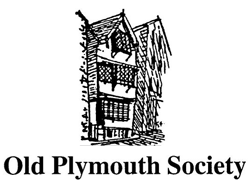by John Boulden
Published December 2012
The earliest known reference to Plympton Priory is a Saxon Charter dated 904 in which King Edward the Elder (899-924) son of Alfred the Great, gave land to the Bishop of Sherbourne in exchange for a monastery at Plympton.
A collegiate church consisting of a Dean and four prebendaries is recorded in the Domesday Survey as existing in 1086. In 1121, William Warelwast, then Bishop of Exeter and a nephew of William the Conqueror, disbanded this community of secular canons and established an order of Augustinians. It seems he was displeased with the running of the Priory as the monks had “taken upon themselves concubines”. This probably meant they had married, this was not allowed!
At the establishment in 1121, the Augustinian Priory was dedicated to St. Peter and St Paul and was very well endowed. A charter of 1123 by Henry I lists holding in Plympton Grange, Boringdon, Dean Prior, Maristow, Newton St Cyres, Priorton, Shaugh, Sherford, Tamerton, Thrushelton, Waterfall, Wembury, Wrangaton, Sutton, (now Plymouth) and several places in east Cornwall.
In time the Priory became one of the foremost monastic houses in England, being the wealthiest house in Devon and the fourth wealthiest establishment of the Augustinian Order in England.
In the 14th century, the Black Prince stayed at the Priory with his retinue before embarking on his campaigns to France. This caused some hardship to the Priory and nearly bankrupted it as the Prince and his followers had to be fed and housed for several days. The Priory was dissolved and surrendered to Henry VIII on March 1st 1539 at which time only a prior and nineteen canons were in residence. John Howe the Prior at the time was granted a pension of £120 a year. He retired to Exeter College, Oxford where he was still living in 1553.
Sir Phillip Champernowne was granted the priory site and immediately set about selling a number of the buildings for demolition to William Strode of Newnham. Records of payments in 1545 to Strode for five chambers and their appurtenances from the late priory at Plympton show the protracted dismantling of the building to furnish materials for new construction. A lease was granted to Vincent Calmady of Wembury for demolition work but is specifically excludes “the Great Dortrye, the Little Dortrye, the New Tower, the mylle, the Powndelhouse, one other house called the Little Chapel and all the out walls” testifying to the survival at this date of significant remains.
Today, sadly, little remains of this once fine Priory although carved stones turn up all over Plympton and the surrounding area. There is a beautiful Norman doorway in the church at Place on the Roseland Peninsula that is believed to have originated at Plympton. It was thought to have been dismantled from the Priory when the church was being modernised some time in the 13th Century and floated on a barge to the new church at Place. Another Norman doorway now serves as a window in a house in “The Old Priory”, at Plympton.
Above this window is a granite carving of the coat of arms of the Priory, a sword crossed with two keys. The windows of the porch in the “Hele Arms”, are also from the Priory, it is also believed the pillars in the cellars of Langdon Court came from the Priory.
During 1957 – 58 excavations took place that determined some idea of the size and construction of the Priory church. The nave measured app.16.0m wide by 44.0m from the west end to the transepts with ten bays in total. Evidence of rendering with white plaster painted with regular tracery in black and yellow to create a false ashlar design survived on the internal walls. In the south wall of the nave a doorway was discovered leading into the cloisters and to the west of this was the remains of a side chapel containing a marble altar (now on display in the south porch of St Mary’s Church) and stone mouldings painted in pink and gold.
Two burials that were discovered below the south aisle have been interpreted as being Saxon At present the Plympton & District Civic Society have embarked on a programme of restoration and interpretation of the standing remains of the Priory site. It has commissioned Exeter Archaeology to produce a management plan and an archaeological survey and recording document. The site has been cleared of invasive sycamore trees that were damaging the walls and the underground archaeology. The long term aim is to consolidate the walls that have been damaged by trees and ivy, to grass the area and mark out the layout of the church with gravel paths, erect interpretation boards and make the site of Plympton Priory available for the enjoyment and interest of the public.


